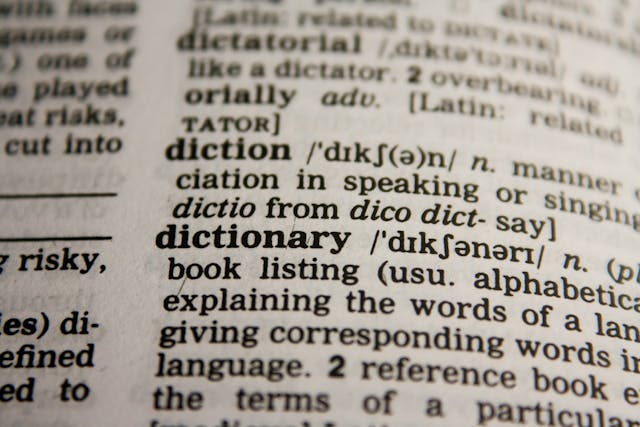Automatically blur image text has become a game-changer in modern digital workflows. Whether you’re aiming to protect sensitive information, enhance creative projects, or meet privacy standards, this powerful technique is invaluable. In a world increasingly reliant on visual content, ensuring that certain parts of an image are blurred seamlessly can elevate your editing skills and provide practical benefits in various industries.
From casual photo editing to professional document preparation, the ability to automatically blur image text is highly versatile. This guide offers step-by-step instructions, tips, and advanced methods to help you achieve the perfect blur effect. With easy-to-use tools and innovative approaches, you’ll learn how to blur text in images effectively and confidently, no matter your experience level.
In the sections ahead, we’ll explore everything you need to know about blurring image text automatically. From choosing the best software to understanding its applications, the insights shared here are designed to empower you with practical skills and knowledge. Let’s dive into the fascinating world of automatic text blurring.
Understanding the Importance of Automatically Blur Image Text
Automatically blur image text serves multiple purposes, making it a crucial skill for various scenarios. By grasping the importance of this technique, you can identify when and how to apply it effectively.
Why Blur Image Text?
- Privacy Protection: Safeguard sensitive details like personal information, financial data, or addresses.
- Content Focus: Eliminate distractions by hiding unnecessary text, ensuring the viewer’s attention stays on the main subject.
- Compliance: Meet privacy regulations like GDPR by obscuring confidential information in shared visuals.
Common Scenarios
- Social media sharing
- Document editing
- Creative design projects
- Educational presentations
Tools for Automatically Blur Image Text
Numerous tools can help you automatically blur image text, catering to users of all skill levels.
Popular Software Options
- Adobe Photoshop: Advanced tool for detailed editing.
- Canva: User-friendly interface with pre-designed blur effects.
- GIMP: Open-source software ideal for beginners.
- Online Tools: Websites like Pixlr offer quick and free solutions.
Key Features to Look For
- Automation capabilities
- Adjustable blur intensity
- Compatibility with multiple file formats
- Ease of use
Preparing Your Image
Before applying a blur effect, prepare the image for optimal results.
Steps to Get Started
- Select Your Image: Choose a high-resolution image for better clarity after editing.
- Identify Text Areas: Pinpoint the parts of the image containing text to be blurred.
- Backup Your File: Save a copy of the original image to avoid permanent changes.
Tips for Better Preparation
- Ensure adequate lighting and contrast in the image.
- Use cropping tools to remove unnecessary sections.
Applying the Blur Effect
Once your image is ready, apply the blur effect to automatically obscure the text.
How to Blur Text
- Open the Image in Your Tool of Choice: Load the file into software like Photoshop or Canva.
- Select the Text Area: Use a selection tool to outline the text.
- Apply the Blur: Choose a blur effect such as Gaussian or Motion Blur and adjust intensity.
Automation Features
Modern tools often include AI-driven features that detect text areas and apply blur effects automatically, saving time and effort.
Refining the Blur
Achieving a polished result requires fine-tuning the blur effect.
Adjustments to Consider
- Intensity: Too much blur can obscure surrounding elements; too little might not be effective.
- Edge Cleanup: Smooth out rough edges around the blurred area.
- Color Matching: Ensure the blur blends seamlessly with the image background.
Testing and Feedback
View the image on different devices to ensure consistency and clarity.
Advanced Techniques
Take your skills to the next level with advanced techniques for automatically blurring image text.
Layering Effects
Combine multiple blur effects to create depth or artistic impact.
Batch Processing
For repetitive tasks, use batch processing to blur text in multiple images simultaneously.
Masking Tools
Use masking tools to preserve specific details while blurring surrounding areas.
Avoiding Common Mistakes
Mistakes in automatically blurring image text can detract from the overall quality of your work.
Pitfalls to Watch Out For
- Over-blurring: Excessive blur can make images appear unnatural.
- Incomplete Coverage: Missing parts of the text can undermine privacy goals.
- File Compatibility: Ensure your edited image can be saved in the desired format.
Creative Applications
Beyond practical uses, automatically blur image text can also be a creative tool.
Examples
- Artistic photo effects
- Abstract designs
- Unique backgrounds for presentations
Benefits of Automatically Blur Image Text
Mastering this skill offers numerous advantages, from improving your design portfolio to enhancing privacy compliance.
Key Takeaways
- Time-saving automation
- Enhanced professional output
- Versatility across multiple industries
Conclusion: Mastery Through Practice
Automatically blur image text is more than just a technical skill; it’s a blend of creativity, precision, and adaptability. By understanding its applications, leveraging the right tools, and practicing consistently, you can master this technique and incorporate it seamlessly into your projects.
Whether for personal or professional purposes, the ability to automatically blur image text ensures your visuals meet high standards of quality, privacy, and impact. Embrace the tools and strategies shared here to achieve flawless results every time.





